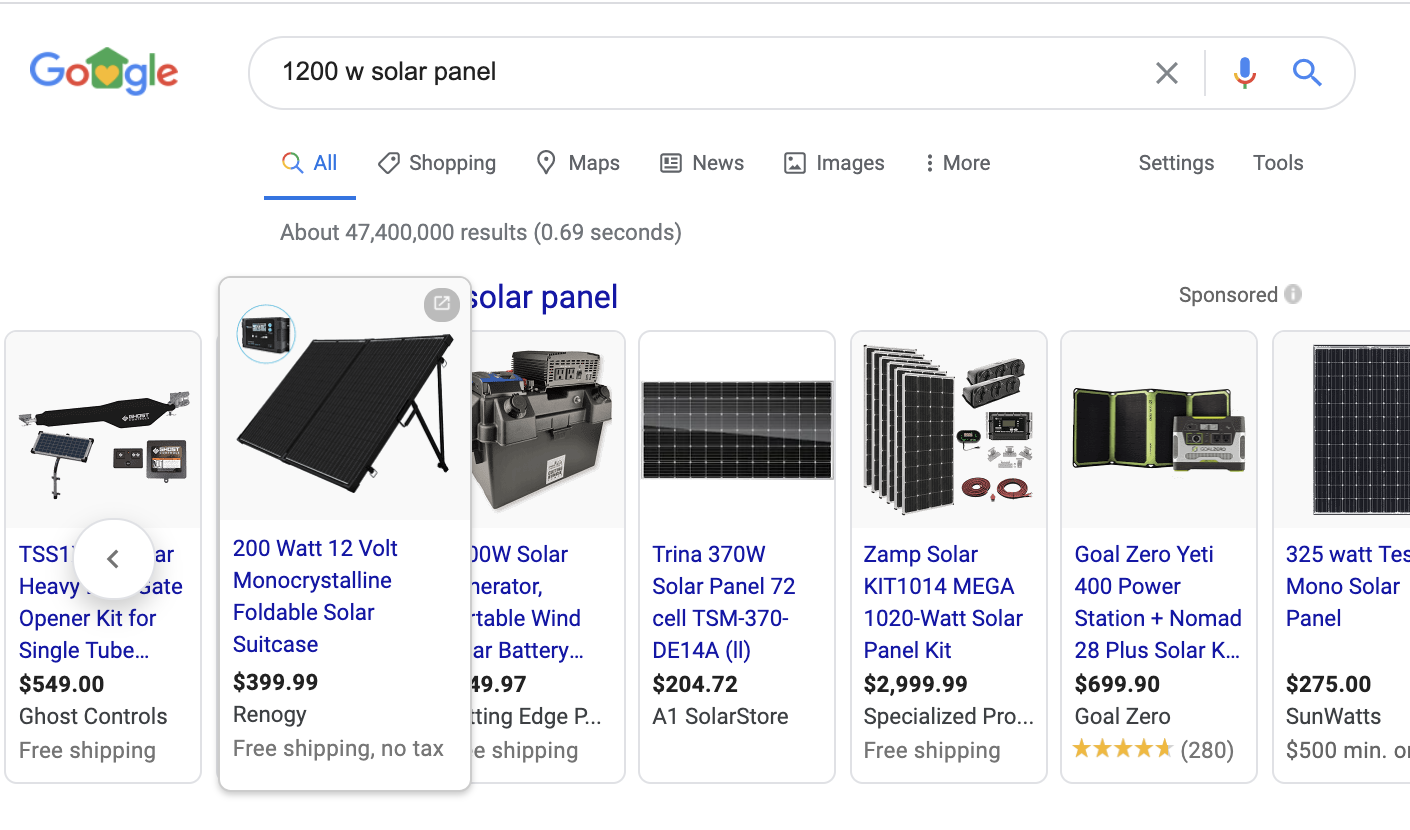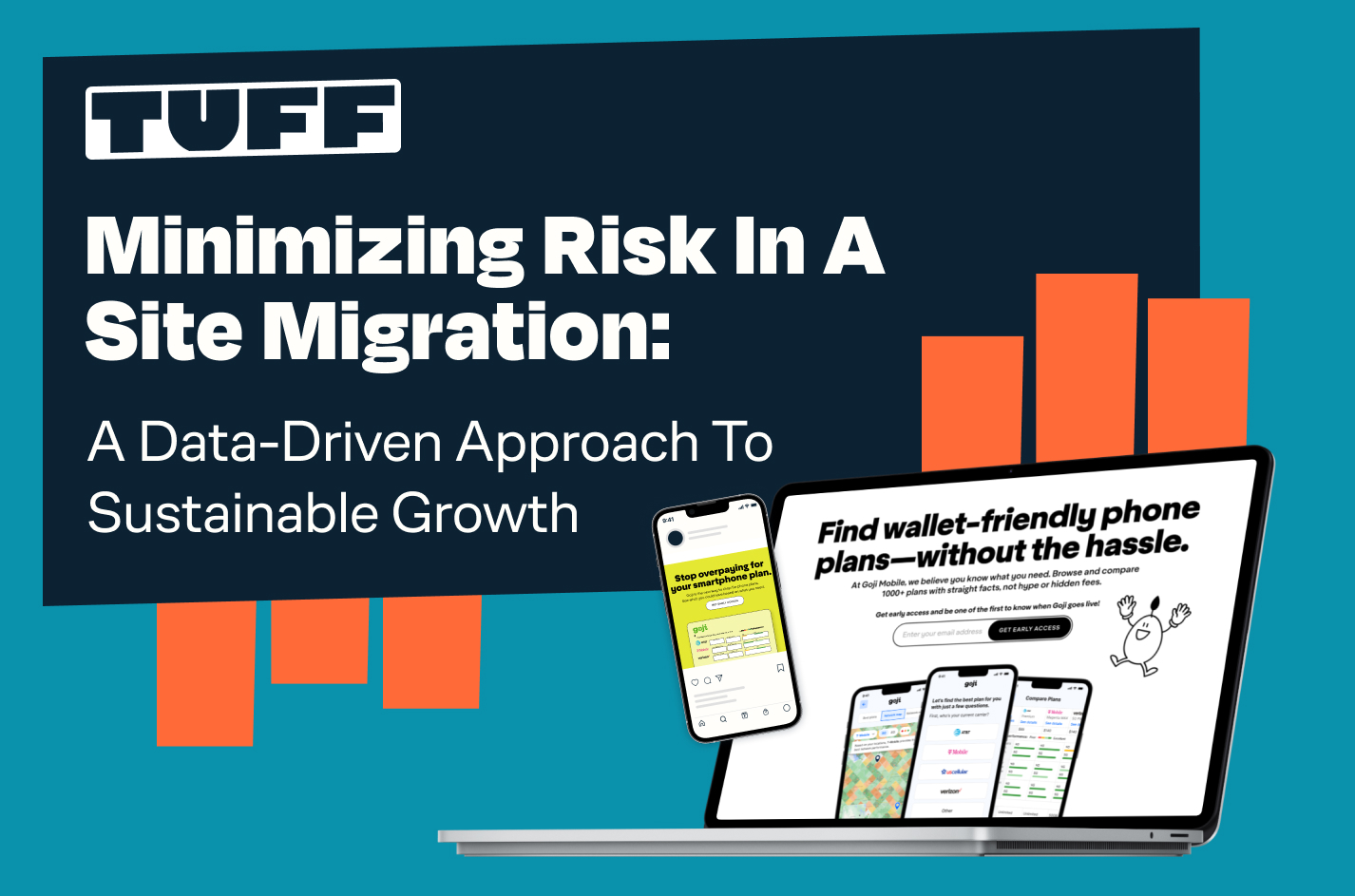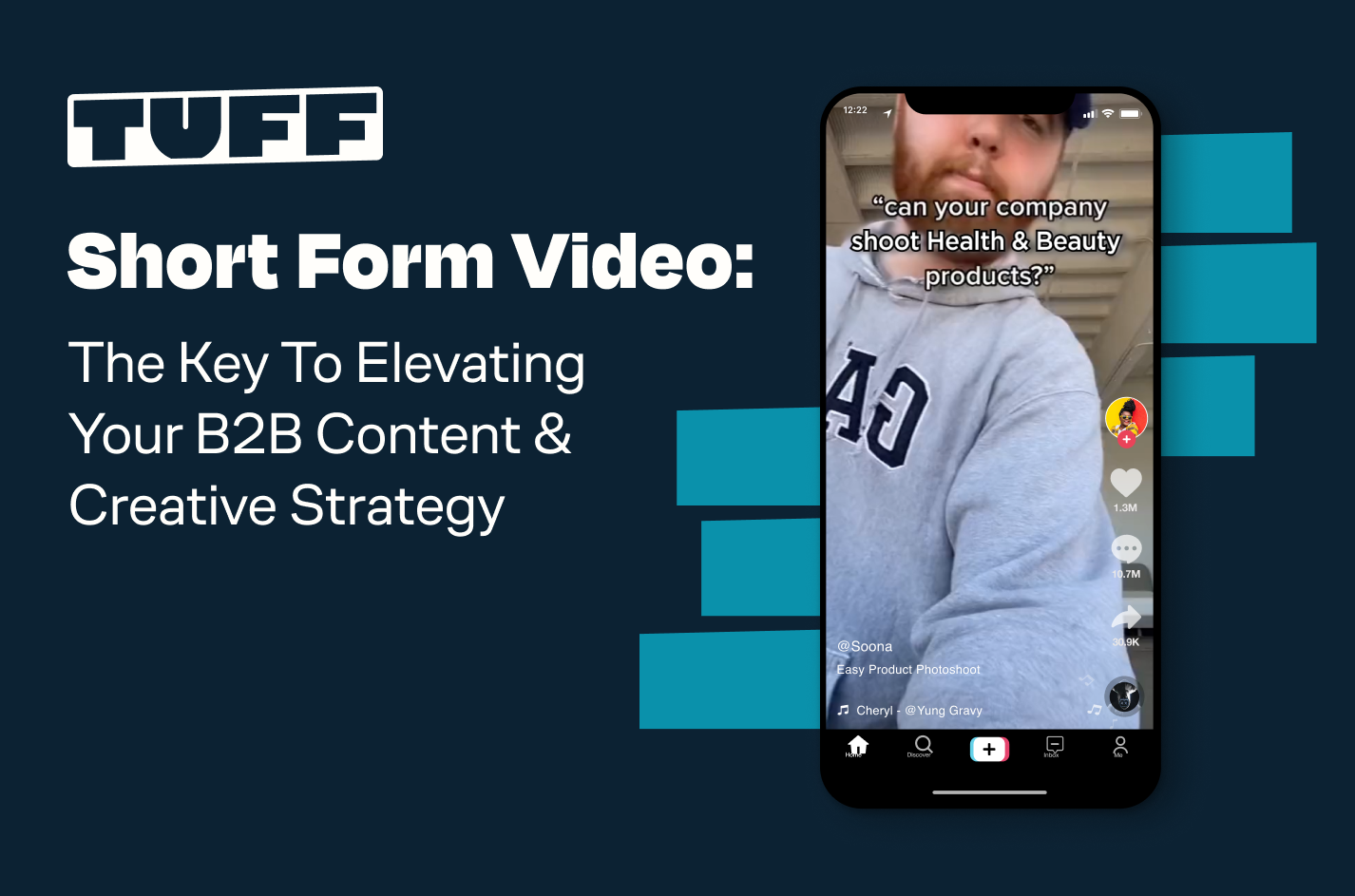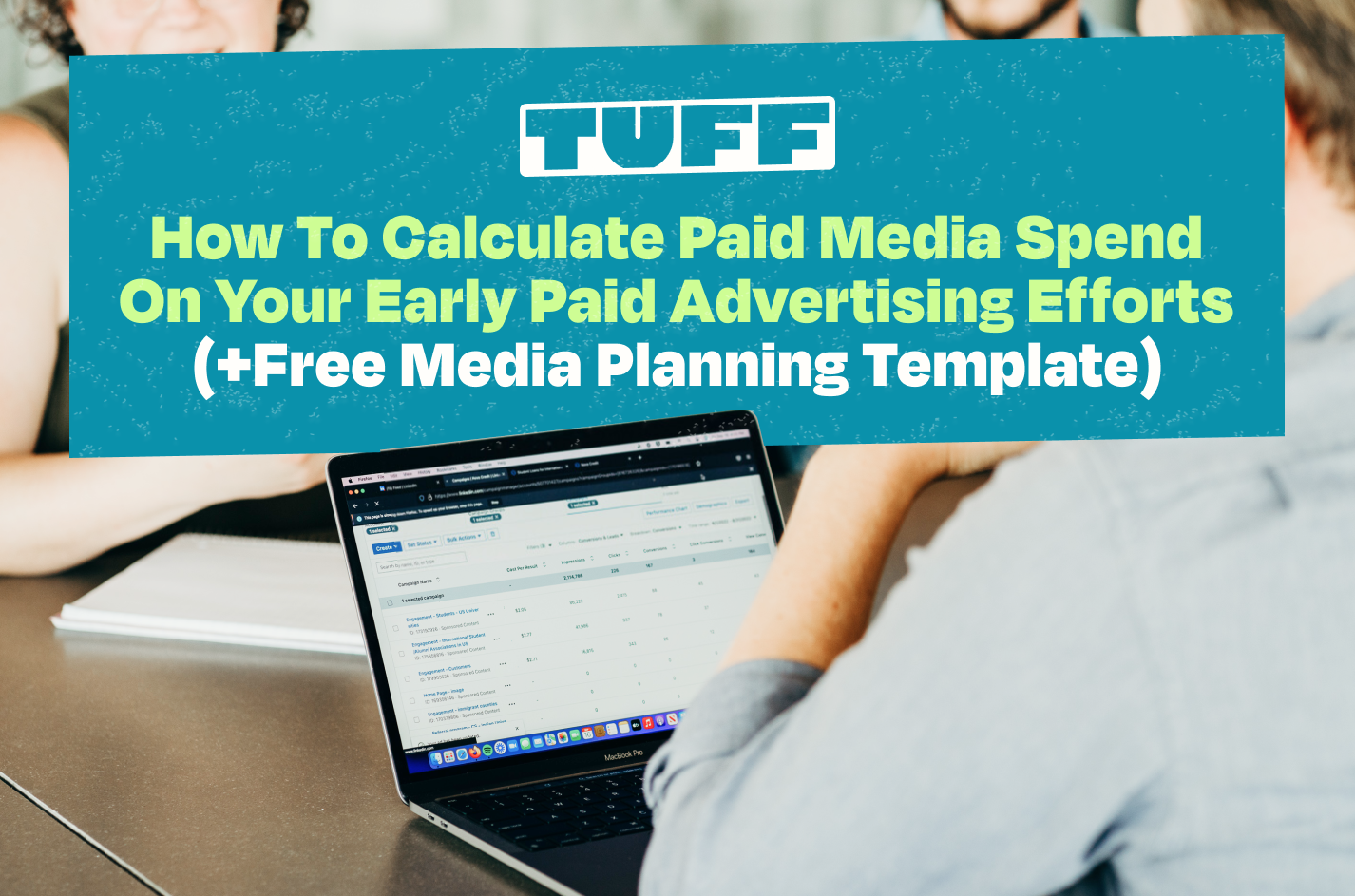Google Ads: How Tuff Optimizations Turned $172 of Extra Ad Spend Into $192,853 More in Sales
Does this post look familiar? We originally published it on January 16, and so much has happened since! It’s now updated with all the latest data and research on the topic. Enjoy!
The renewable energy industry is growing, big time.
According to CNBC, in the U.S., of all new power capacity added to the grid in 2018, about 30% was from solar. In addition to these increases, nearly every segment of the renewable energy market is seeing rapid price declines.
It’s easy to see there is tremendous room for growth, which is why Renogy, a renewable energy company, reached out to our team to help them supercharge their enterprise SEO and paid efforts.
“Working with the Tuff team is an absolute pleasure. They’re incredibly sharp, goal oriented, and fantastic strategists. Most importantly: they get results! Everyone on the team is very personable and we always look forward to our meetings. Integrating the Tuff team has been one of the best decisions we’ve made and we are confident that we’ll do very well scaling up with their help.” – Evan Huynh, Marketing Director, Renogy (View our reviews on Google & Facebook)
We integrated closely as a team back in November, just in time for the end of the year push. In the first 2 months of our partnership, we were able to generate $192,853 in additional sales for November and December by only adding $172 bucks to the budget. That’s when we originally wrote this post.
Now, 6 months into our partnership, we’re back with some updates. At the turn of the new year, we worked closely with the team at Renogy to identify our revenue targets for 2020.
Our first challenge was to increase overall ROAS across our Google Ads campaigns – including search, shopping, and display – with the goal of hitting 3.5 ROAS overall in Q1. And we’re pleased to say we cleared these goals with a 4.5 ROAS.
In this article, I’ll take a close look at the part Google Ads plays in building and optimizing an ecommerce growth strategy, and how Tuff & Renogy worked together to smash the Q1 goals:
We started with a profit-focused strategy
When your online store has different products at different price points and margins, you need to think of them differently. Why? Because not all sales are created equal.
When we took over the Renogy account towards the end of 2019, structurally it was in great shape. Campaigns were organized, settings were optimized, and ads had an above average CTR for the industry. If we had only cared about volume, we would have given this account two thumbs up and kept it humming.
But for Renogy, we cared about volume and profit. So, we needed to analyze the account through a profit-focused lense if we were going to make any meaningful improvements.
We evaluated the value of each sale in the account, not just volume of sales, and identified big discrepancies in ROAS. For example, one ad group generated $250 from $200 spent and another generated $1,200 from $200 giving us a ROAS 1.5 and 6.0, respectively—a significant difference in return for the same amount spent. From a volume perspective these campaigns are equal (each generated one sale) but when you factor in revenue the picture changes quickly.
Armed with the above information, the very first thing we did in the Renogy account was update our analysis and reporting to follow a profit-focused strategy, the goal to achieve as high of a ROAS as possible without losing scale. This helped us:
- Reallocate existing budget to higher ROAS campaign
- Set more profitable campaign spending limits
- Know where to focus our efforts first
- Where are the low ROAS campaigns in the account? Can we update these and get them more profitable?
- Where are the high ROAS campaigns in the account? Can we pump more money into these without dropping our return?
Going even deeper than campaign and ad group level, we performed an exhaustive keyword and search term audit on every non-branded Search campaign (this audit template can be found in Tuff’s “9 Ready-to-Go Growth Marketing Spreadsheets Startups Can Use to Boost Productivity”) using Renogy’s extensive internal Google Ads data over the prior 12 months, to identify our winning keywords and search terms, i.e. the keywords and search terms that were contributing the most revenue, as well as those with the highest ROAS.
Using the audit spreadsheet mentioned in the article linked above, we were able to export all of the data needed from Google Analytics within the past 12 months, and quickly compare the keywords and search terms with a variety of filters.
What we found was that although certain keywords and search terms may have had an above-average conversion rate, that didn’t necessarily mean these keywords and terms were performing a positive ROAS. By focusing on the ROAS above all of the other factors, we easily identified our winning keywords within each campaign, as well as our underperforming keywords, which were promptly removed from the campaigns in order to allocate the spend to our top performers.
We were also able to identify some additional search terms that were driving great ROAS but weren’t currently being used as exact match keywords. With these findings, we were able to add these search terms that have been proven to drive profitable ROAS as exact match keywords into our campaigns in an attempt to trigger results for these terms more often.
Since the completion of the keyword audit, performance of non-branded search campaigns has skyrocketed, with a 194% increase in conversion rate and 274% increase in transactions when compared to the previous time period. Additionally, we substantially lowered the average cost per order from $632 to $128!
Then, flipped standard shopping to smart
Out of all the existing campaigns in the account, Renogy’s shopping campaign was driving the lowest ROAS.
With our profit-first focus, we dug into the analysis for the standard shopping campaign and realized that it wasn’t structured around the most profitable products and search terms. Instead, it treated every product – from the $49 solar speaker to the $1,200 lithium battery – the exact same.
In this case, three of this campaign’s 100+ products were spending half of the budget over a 30-day span. And they’re only bringing in a tiny 11% of revenue. Ouch.
Because Shopping campaigns don’t use keywords, your product feed takes their place and is responsible for the signals that connect people’s searches with your products. For a quick win and momentum boost, we flipped the campaign from standard to smart and stripped out any product that was sucking up spend without delivering a solid return.
Within a week, our negative ROAS shopping campaign started turning out a consistent 668% ROAS week over week over week. And with Q1 officially wrapped up, our Smart Shopping campaign finished the quarter at 679% ROAS.
And finally, bulked up sales with the right promos
This final strategy we had very little to do with but it’s worth mentioning in the grand scheme of it all. While we were busy making profit-focused account optimizations, the Renogy team strategically rolled out product promotions and sales to support our revenue targets. In turn, we were able to supercharge these sales with Google Ads by:
- Updating search ad copy to match the promo and sale messaging
- Build sitelink and promo extensions to accompany our campaigns
- Bulk up display efforts promoting the sale
- Each one of these promotions, small and large, helped us bulk up our growth trajectory with Google Ads.
Building and optimizing an ecommerce growth strategy on Google to get results like this is not easy. It’s not rocket science either, though. If your execution is data-driven and your product is high quality, you can see results like this, too. If you want to explore more about how to scale your customer acquisition with Tuff, or want a first-hand look at the data showcased above, touch base to set up a free, 30-minute growth strategy session with our team. We’d love to learn more about who you are and what you do so that we can help you find your way to the next level.
We’d love to work with you.
Schedule a call with our team and we’ll analyze your marketing, product, metrics, and business. Then, present a Growth Plan with actionable strategies to find and keep more engaged customers.
And stay tuned for a Q3 update!

Chris is a PPC Strategist based in Nashville, Tennessee. When he’s not scaling Google Ads & YouTube campaigns, he enjoys longboarding, tinkering with automation tools, and a little bit of gaming.






